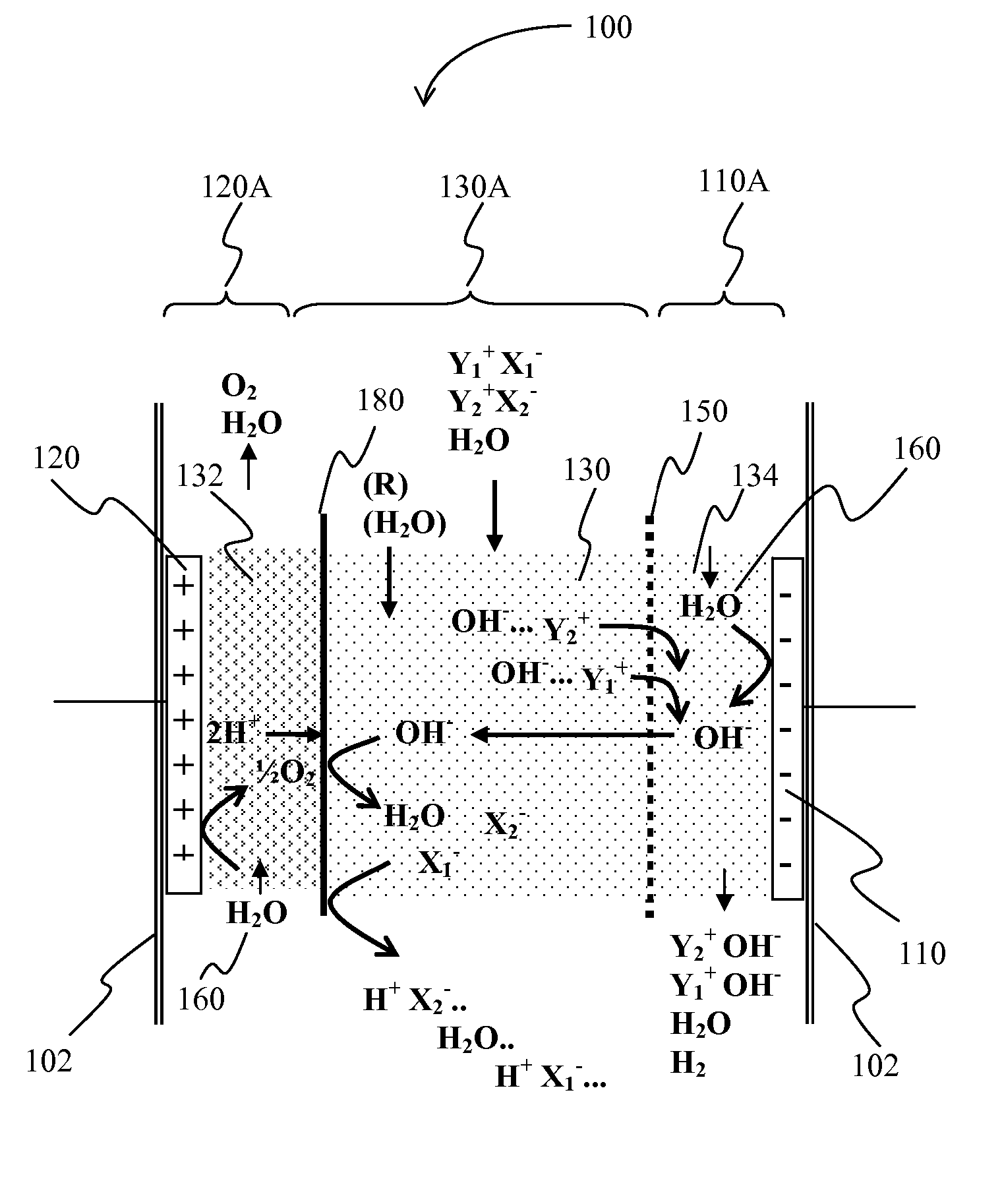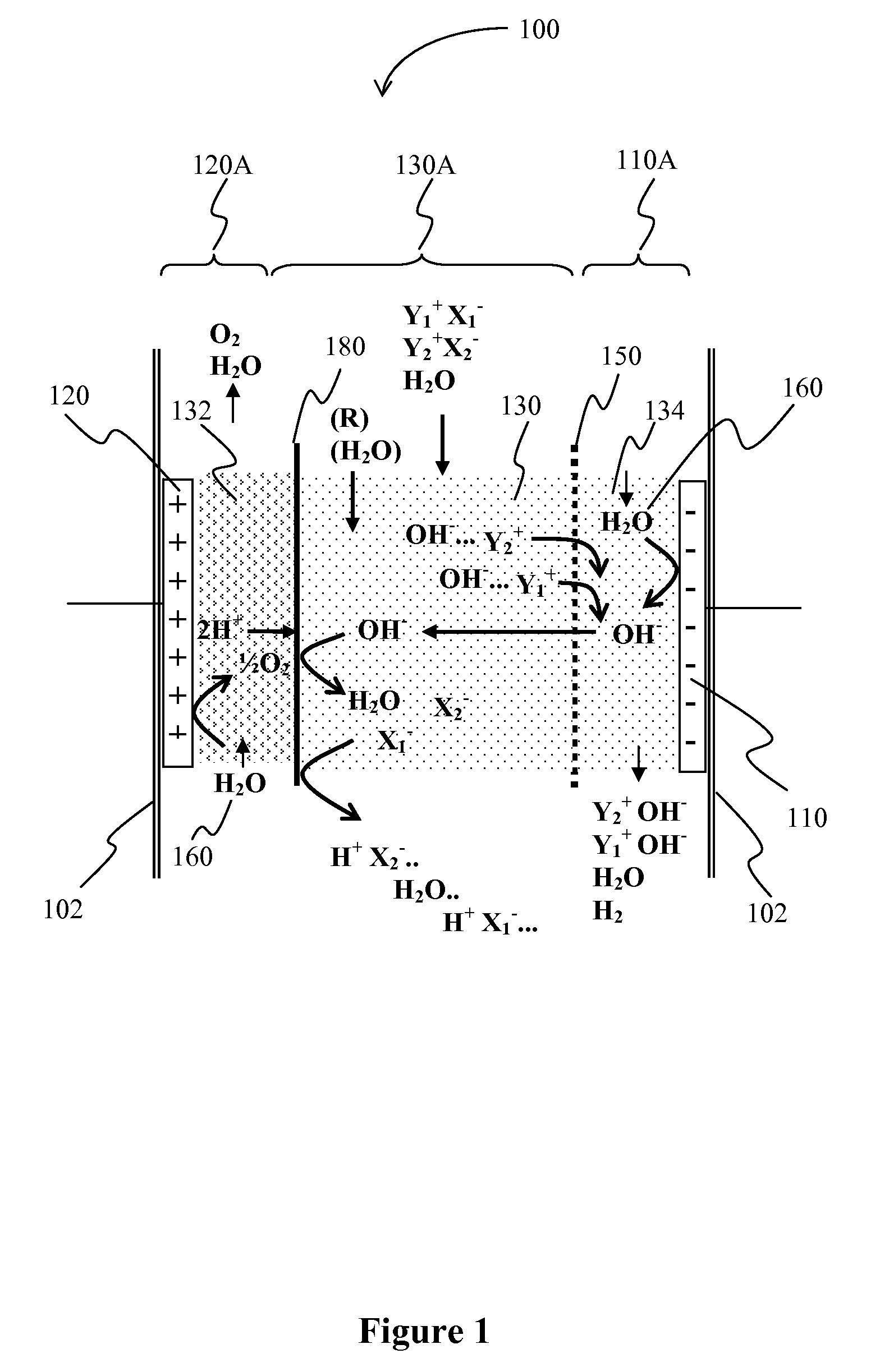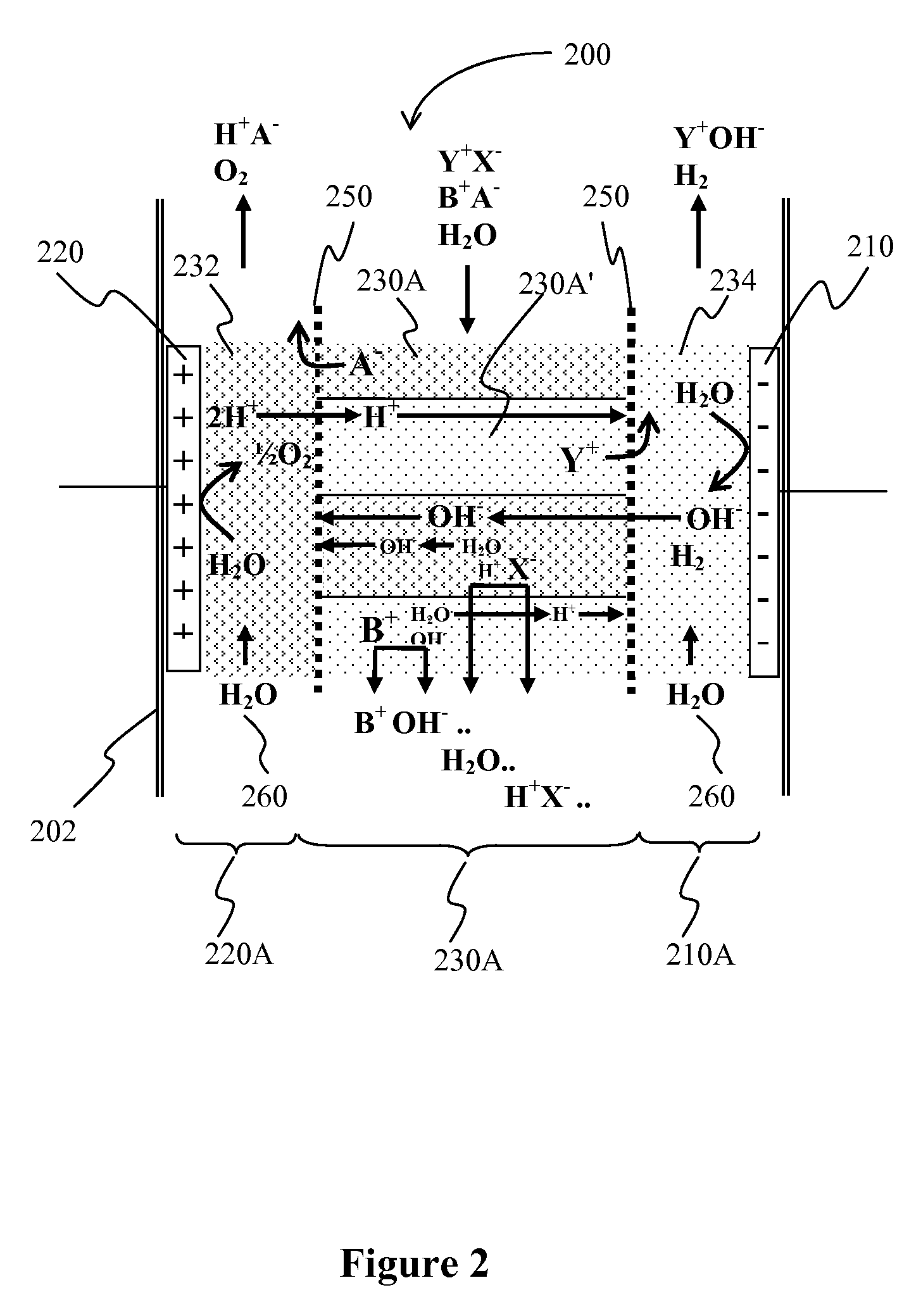Separation Systems with Charge Mosaic Membrane
a technology of mosaic membrane and separation system, which is applied in the direction of separation process, water/sewage treatment by ion exchange, centrifuge, etc., can solve the problems of difficult operation of many such systems, difficult to resolve the resolution of analytes, and high cost of hplc systems
- Summary
- Abstract
- Description
- Claims
- Application Information
AI Technical Summary
Benefits of technology
Problems solved by technology
Method used
Image
Examples
examples
[0073] The following examples are provided to further illustrate the inventive subject matter, and especially to provide further guidance to a practitioner with respect to CMM gradient separation and CMM buffered electrodialysis. (Membrane Dynamically Scanned Electrophoresis and Dynamically Buffered Electrodialysis).
CMM Buffered Electrodialysis—Dynamically Buffered Electrodialysis
[0074] Device Description:
[0075] Basic elements of a CMM buffered electrodialysis device are shown in FIG. 3. All ion-exchange materials are made similar to CMM Gradient Separation device. 1—Anode, 2—Anion-exchange screen, 3—Charge mosaic membrane, 4—Cathode, 5—Cation-exchange screen, 6—Bi-charge screen. The screen is prepared by thermally stitching 4 mm wide strips of cation- and anion-exchange screens together. Dimensions 5 cm wide and 20 cm high. 7A and 7B—Anode compartment water flow ports, 8A and 8B—Cathode compartment water flow ports, 9—Sample port, 10—Analyte port.
[0076] Continuous Operation Mod...
PUM
| Property | Measurement | Unit |
|---|---|---|
| MW | aaaaa | aaaaa |
| volume | aaaaa | aaaaa |
| angle | aaaaa | aaaaa |
Abstract
Description
Claims
Application Information
 Login to View More
Login to View More - R&D
- Intellectual Property
- Life Sciences
- Materials
- Tech Scout
- Unparalleled Data Quality
- Higher Quality Content
- 60% Fewer Hallucinations
Browse by: Latest US Patents, China's latest patents, Technical Efficacy Thesaurus, Application Domain, Technology Topic, Popular Technical Reports.
© 2025 PatSnap. All rights reserved.Legal|Privacy policy|Modern Slavery Act Transparency Statement|Sitemap|About US| Contact US: help@patsnap.com



